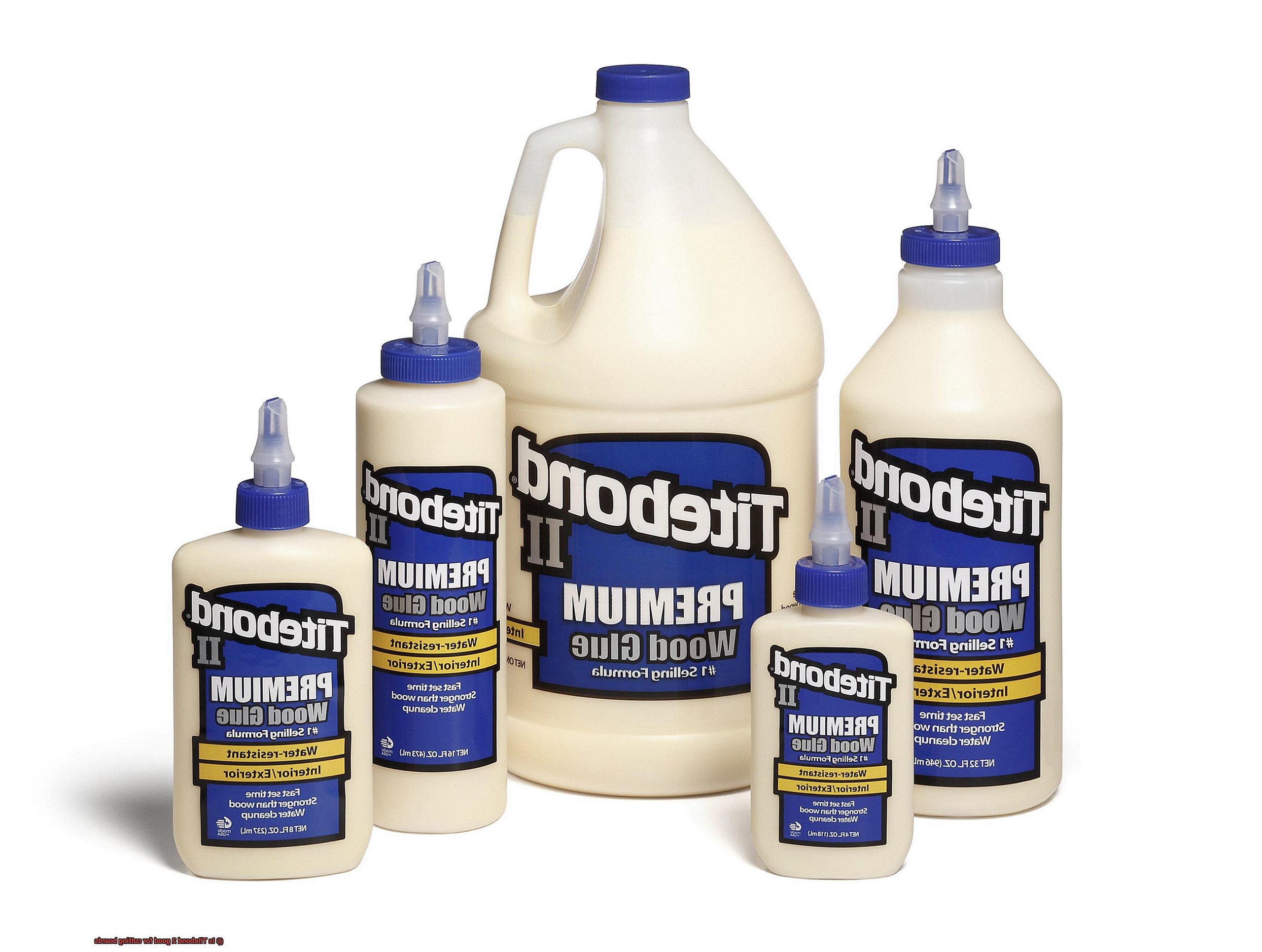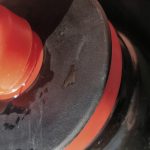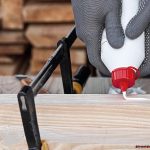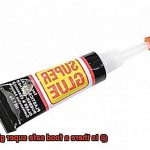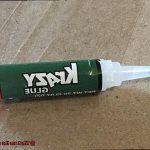You’re ready to tackle the challenge of making your own cutting board. Congratulations. Now, let’s talk about the glue. Choosing the right adhesive can make or break your cutting board project. Lucky for you, there’s a glue that has been winning over woodworking enthusiasts for years – Titebond 2.
Why is Titebond 2 so popular among cutting board creators? Well, it’s not just because it sounds cool (although it does have a catchy name). This adhesive is a rockstar when it comes to bonding strength, water resistance, and food safety. It’s like the superhero of glues, swooping in to save your cutting board from falling apart.
In this blog post, we’re diving deep into why Titebond 2 is the glue you need in your life (and your workshop) when it comes to crafting beautiful and functional cutting boards. From its unrivaled adhesive properties to its food-safe certification, get ready to learn why Titebond 2 deserves a spot on your workbench for all your cutting board projects.
What is Titebond 2?
Contents
This exceptional wood glue is revered for its unmatched bonding strength and long-lasting performance. In this article, we will delve into the world of Titebond 2 to understand why it is the ultimate adhesive for all your woodworking projects.
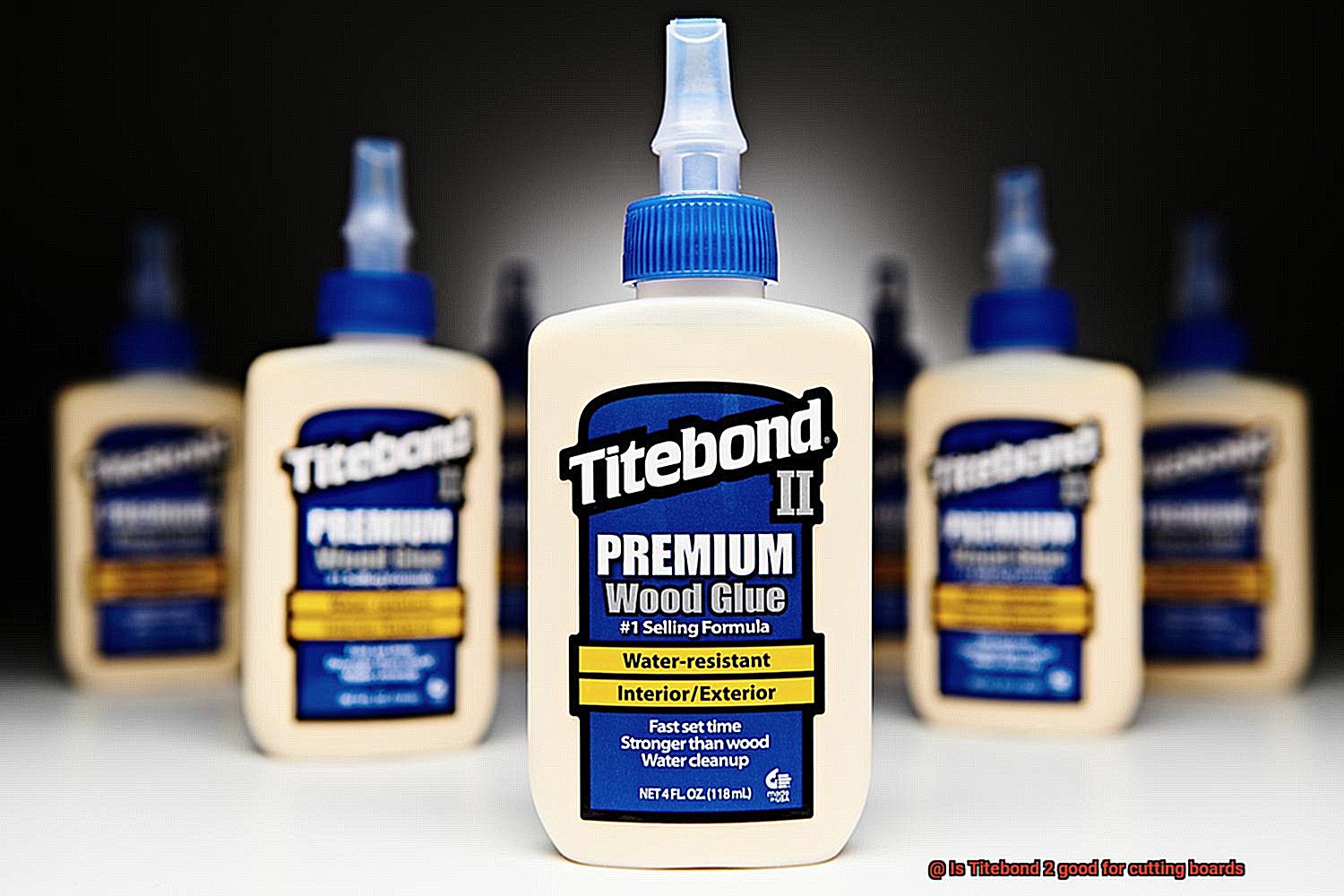
Water Resistance:
Titebond 2 boasts a standout feature – its water-resistant formula. While not completely waterproof, it provides reliable protection against moisture and humidity. This makes it perfect for projects like cutting boards, eliminating worries about warping or disintegration due to water damage.
Strong Bonding Capabilities:
The secret to Titebond 2’s success lies in its ability to penetrate deep into wood fibers, creating a molecular bond that guarantees project longevity. With its exceptional bonding strength, you can confidently tackle even the most challenging woodworking endeavors. Whether crafting furniture, cabinets, or intricate wooden sculptures, Titebond 2 is your trusted companion.
Ease of Use:
Applying Titebond 2 is a breeze thanks to its thick consistency that prevents messy drips and runs. It excels on vertical surfaces and allows for precise applications, easily adhering to your project’s requirements. Say goodbye to wasted time and effort cleaning up excess glue.
Safety First:
Titebond 2 is non-toxic and produces no harmful fumes during use, ensuring a safe working environment. This versatility allows for both indoor and outdoor usage without any concerns. However, remember to take necessary safety precautions such as wearing gloves and working in a well-ventilated area when handling any type of adhesive.
Cutting Board Compatibility:
Wondering if Titebond 2 is suitable for cutting boards? The answer is a resounding yes. Its water resistance, FDA approval for indirect food contact, and strong bond strength make it an excellent choice. Simply ensure the glue fully cures before using the cutting board for food preparation and avoid prolonged exposure to water.
Properties of Titebond 2
When it comes to building the perfect cutting board, Titebond 2 is the glue that should be at the top of your list. This incredible adhesive possesses a range of properties that make it an ideal choice for constructing cutting boards that are not only beautiful but also durable and long-lasting.
First and foremost, Titebond 2 is renowned for its impressive water resistance. Cutting boards are regularly exposed to water, whether it’s from washing or from the juices of the delicious fruits and vegetables we chop. With Titebond 2, you can bid farewell to worries about your cutting board falling apart or warping due to moisture. This glue is specially formulated to withstand wet conditions and maintain a strong bond between the wood pieces.
Not only does Titebond 2 offer exceptional water resistance, but it also boasts a fast-drying time. Time is of the essence, especially when you’re working on a woodworking project. With Titebond 2, you won’t have to wait hours for the glue to dry before moving on to the next step. In just 30 minutes, this glue sets and allows you to continue with your project without any unnecessary delays.
Strength is another crucial factor when it comes to cutting boards, as they endure constant chopping and cutting motions. Titebond 2 delivers outstanding strength and bond performance, ensuring that your cutting board remains intact even under the most rigorous use. Say goodbye to worries about your board falling apart or the wood pieces separating – Titebond 2 has got you covered.
Now let’s talk about safety. When working with cutting boards, it’s essential to consider the materials used and their potential impact on food contact surfaces. Thankfully, Titebond 2 is non-toxic and safe for use with food items. You can rest assured knowing that there are no harmful chemicals leaching into your food while using a cutting board constructed with this glue.
Heat resistance is another noteworthy property of Titebond While it’s not designed to withstand extreme temperatures, it can handle moderate heat without compromising its bond strength. So go ahead and place that hot pot or pan on your cutting board – Titebond 2 won’t let you down.
Last but not least, Titebond 2 is incredibly user-friendly. Its smooth consistency allows for easy application and even spreading on wood surfaces. Cleanup is a breeze too – simply use water to remove any excess glue before it dries. Whether you’re a seasoned woodworker or just starting out, Titebond 2 makes the process hassle-free.
Is Titebond 2 Water-Resistant?
While it may not be entirely waterproof, this adhesive can withstand a certain level of moisture exposure without compromising its adhesive properties. This makes it an excellent choice for making cutting boards, which are constantly exposed to water and moisture.
However, it is crucial to note that prolonged exposure to water can weaken the bond created by Titebond To ensure the longevity and water resistance of your cutting board, it is advisable to take some precautions. One effective measure is to apply a food-safe finish or sealant on top of the glued surface. This additional layer acts as a protective barrier against moisture, safeguarding the adhesive bond and preventing any potential water damage.
When crafting a cutting board with Titebond 2, it is also essential to consider the type of wood used. Some woods possess natural resistance to water, making them ideal choices for cutting board construction. Hardwoods like maple, cherry, and walnut are renowned for their ability to repel moisture effectively. By combining these naturally water-resistant woods with the water-resistant properties of Titebond 2, you can create a cutting board that not only boasts durability but also exhibits an impressive ability to withstand water exposure.
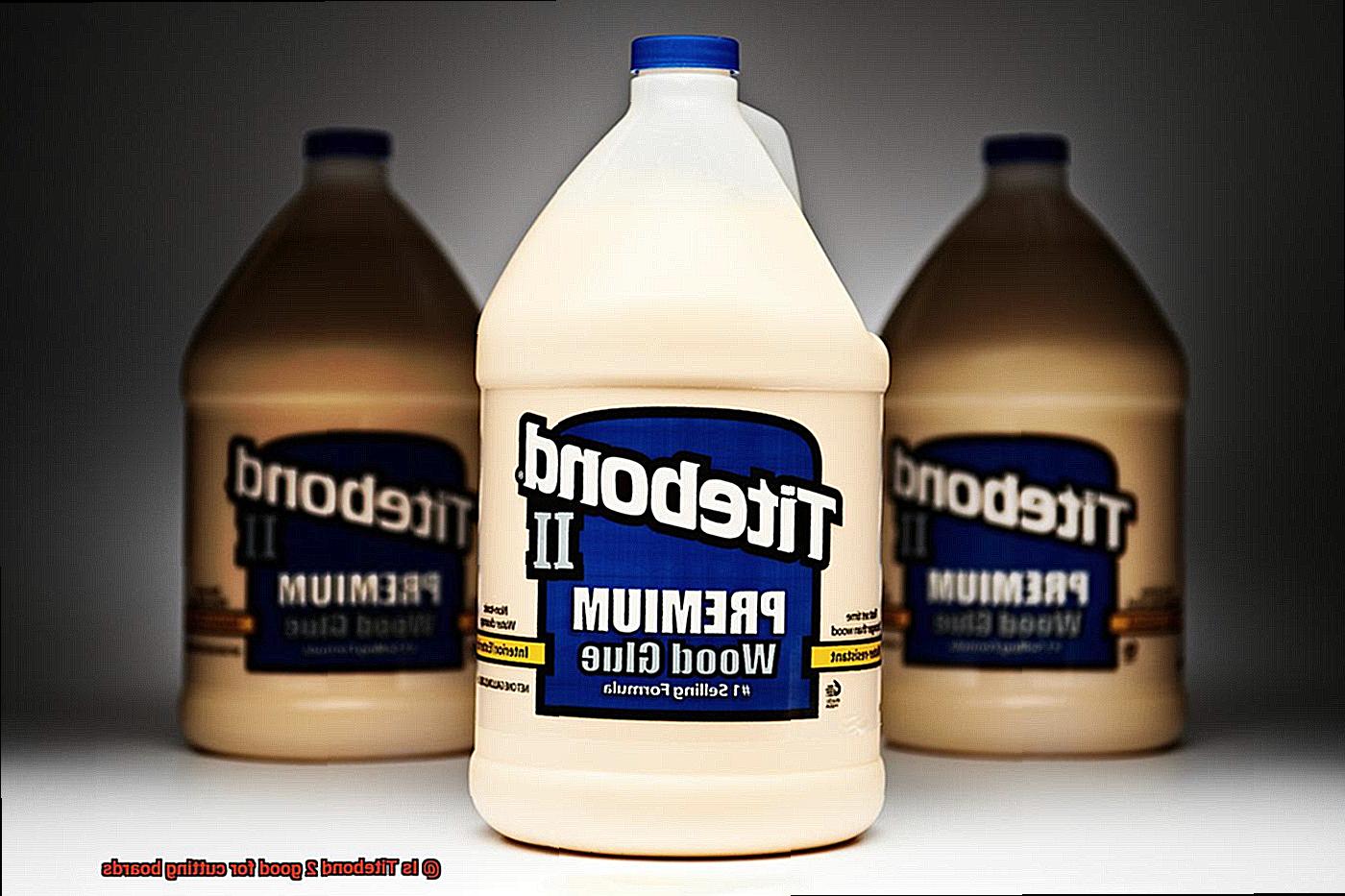
Is Titebond 2 Food-Safe?
When it comes to woodworking projects like building a cutting board, the question of whether Titebond 2 wood glue is food-safe arises. After all, you want to ensure that the glue you use on a surface that will come into contact with food is safe for consumption. So, let’s dive into the research and find out if Titebond 2 is indeed food-safe for cutting boards.
Titebond 2 is considered to be food-safe once it has fully cured. This means that after the glue has dried completely, it should not pose any health risks if it comes into contact with food. Franklin International, the manufacturer of Titebond 2, even states that their product is FDA approved for indirect food contact. While the glue itself may not be intended to come into direct contact with food, it can be used in applications where it will have incidental contact with food.
However, it’s important to note that Titebond 2 should only be used in areas where it will not come into direct and prolonged contact with food. This means that it should not be used on surfaces where food will be prepared or served directly. If you’re building a cutting board that will be used for chopping and preparing food, Titebond 2 may not be the best choice.
To ensure maximum food safety, apply a generous amount of glue and use clamps to hold the pieces together tightly during curing. This creates a strong bond and minimizes the chances of any glue residue coming into contact with food. Allow sufficient time for the glue to fully cure before using the cutting board, typically around 24 hours.
If you have concerns about using Titebond 2 on a cutting board, there are alternative food-safe glues available on the market. Epoxy glues specifically designed for food-contact applications or natural glues such as hide glue or milk paint glue are formulated to be safe for direct and prolonged contact with food.
Ultimately, the decision to use Titebond 2 on a cutting board depends on personal preference and comfort level. If you’re unsure about its food safety, it’s always recommended to consult with the manufacturer or seek advice from woodworking experts who can provide guidance on suitable glues for cutting board construction that meet specific food safety requirements.
Can Titebond 2 Withstand Knife Contact?
Embarking on the journey of building your own cutting board can be an exciting endeavor. However, one important question that arises is whether Titebond 2, a popular wood glue, can withstand knife contact. In this comprehensive analysis, we will explore the facts, curing process, wood selection, protective measures, and alternative options to provide a definitive answer.
The Facts:
Titebond 2 is renowned for its strong bond in woodworking projects. While it is commonly used in cutting board construction, it is crucial to note that it is not specifically designed to resist direct knife contact. While it excels at bonding wood together, its ability to withstand knife marks and scratches may not be as high as specialized products.
The Curing Process:
Proper curing of Titebond 2 in your cutting board is essential. Ensuring that the glue joint between the wooden pieces is thoroughly dried and cured will maximize its strength and durability. However, even with a well-cured bond, Titebond 2 may not hold up against repeated or heavy knife use over time.
Wood Selection Matters:
The choice of wood for your cutting board significantly impacts its durability. Hardwoods like maple, walnut, and cherry are preferred due to their natural resistance to knife damage. However, even with these resilient woods, the bond created by Titebond 2 may still be susceptible to wear and tear from constant knife contact.
Protective Measures:
To enhance the durability of your cutting board and minimize potential damage from knife contact, applying a food-safe finish or sealant over the entire surface is recommended. This additional layer of protection helps guard against moisture and knife marks. Regular maintenance and reapplication of the finish may be necessary to ensure continued protection.
Alternative Options:
For those concerned about knife contact, exploring specialized glues designed explicitly for cutting board applications may be worthwhile. These glues often possess higher resistance to knife marks and provide a more durable bond. Consulting woodworking experts for guidance on suitable options that meet specific food safety requirements is always a prudent choice.
Conclusion:
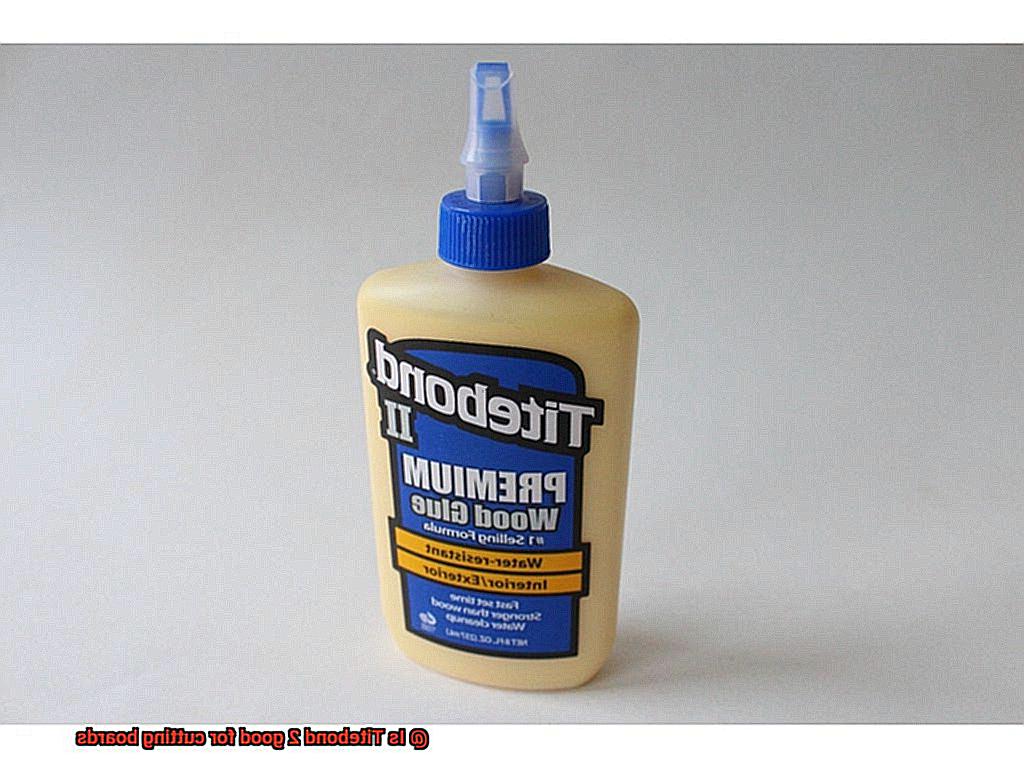
While Titebond 2 can indeed be used in cutting board construction, its ability to withstand knife contact may be limited. Proper curing, wood selection, and additional protective measures can help mitigate potential damage. However, for cutting boards subjected to rigorous knife contact, it is advisable to consider alternative glues specifically designed for this purpose.
Pros and Cons of Using Titebond 2 for Cutting Boards
In this comprehensive analysis, we will delve into the pros and cons of using Titebond 2 for cutting boards, equipping you with the knowledge to make an informed decision.
Let’s begin with the advantages. First and foremost, Titebond 2 boasts exceptional bonding capabilities. It forges a strong and resilient bond between wooden pieces, ensuring that your cutting board remains intact even amidst vigorous use. Bid adieu to any concerns of your board disintegrating while you’re diligently dicing those delectable veggies.
Furthermore, Titebond 2 is imbued with impressive water resistance. Cutting boards often endure exposure to moisture from food and cleaning, but fear not. Titebond 2 can withstand it all. Its water-resistant properties deter wood from absorbing water, thus mitigating the risks of warping or damage. You can confidently cleanse your cutting board without trembling at the thought of it losing its shape.
Safety is a paramount concern when it comes to cutting boards, and Titebond 2 excels in this regard as well. It is non-toxic and FDA-approved for indirect food contact, granting you peace of mind knowing that no malevolent chemicals are seeping into your food.

Moreover, Titebond 2 boasts a relatively rapid drying time, allowing for expedient assembly of cutting boards. This feature proves invaluable if you find yourself operating under time constraints or simply yearn to swiftly complete your project.
Now, onwards to the disadvantages. While Titebond 2 exhibits commendable water resistance, it is ill-suited for applications where continual exposure to water is anticipated. Prolonged interaction with water can gradually weaken the bond over time; therefore, it is crucial to abstain from subjecting your cutting board to soaking or dishwasher placement.
Another drawback lies in the potential visibility of glue lines if Titebond 2 is not meticulously applied and clamped during assembly. This aesthetic consideration may impact the overall allure of your cutting board, particularly if the glue line is glaringly apparent on its surface.
It is also worth noting that Titebond 2 is a solvent-based adhesive, emanating potent fumes during application. Consequently, it is imperative to employ this adhesive within a well-ventilated environment to ensure occupational safety.
Application Tips for Using Titebond 2 on Cutting Boards
If you’re a fan of woodworking projects like cutting boards, then you’ve probably heard of Titebond 2 glue. This special glue is famous for creating strong bonds and resisting water, making it perfect for cutting boards that may come into contact with moisture. But how do you use it properly to ensure the best results? Let’s dive into some helpful application tips.
Preparing the Surface:
Before you start gluing, it’s important to prepare the surface of your cutting board. Use sandpaper to make it smooth and even. Start with a coarse grit sandpaper and gradually switch to finer ones for a polished finish. Sanding not only creates a better bond, but it also enhances the overall appearance of your cutting board. Remember to remove any dust or debris from the surface for better adhesion.
Applying the Glue:
Now it’s time to apply the Titebond 2 glue. Use a brush or roller to spread a thin and even layer onto one of the surfaces to be bonded. Avoid using too much glue as it can make a mess when pressure is applied. Make sure to cover all areas, including the edges and corners. The goal is to achieve full coverage without excess glue seeping out.
Joining and Clamping:
After applying the glue, carefully join the surfaces together and apply pressure. You can use clamps or weights to hold them in place while the glue dries. It’s important to apply even pressure across the entire surface area to ensure a strong bond. Following the manufacturer’s instructions, let the glued cutting board dry for at least 24 hours. This will give the glue enough time to fully cure and create a strong bond.
Cleaning Up:
Accidents happen, and if you accidentally spill or drip any glue during application, it’s essential to clean it up immediately with a damp cloth. Once the glue dries, it becomes difficult to remove without damaging the wood surface. Taking the time to clean up any spills will ensure a neat and professional-looking cutting board.
Safety First:
Always remember to follow Titebond 2’s specific instructions and safety guidelines for optimal results. This includes avoiding excessive heat during drying and not rushing the process. Be patient, and your cutting board will thank you. Prioritize your safety by wearing protective gloves and working in a well-ventilated area.
PVpX-MI3nvc” >
Conclusion
In conclusion, Titebond 2 is the ultimate adhesive for crafting top-notch cutting boards. Its unmatched bonding strength, water resistance, and food-safe certification make it a reliable and versatile choice for woodworking enthusiasts.
With Titebond 2’s water-resistant formula, your cutting board will remain resilient against moisture-induced warping or disintegration. While it may not be completely waterproof, it offers dependable protection against everyday kitchen use.
The glue’s robust bonding capabilities create a molecular bond between wood fibers, ensuring that your cutting board stands strong even under the most demanding circumstances. Its user-friendly nature and thick consistency prevent messy drips and runs, allowing for precise and hassle-free application.
When it comes to safety, Titebond 2 takes the crown. It is non-toxic, emits no harmful fumes during use, and has received FDA approval for indirect food contact. However, it is crucial to let the glue fully cure before using the cutting board for food preparation and to avoid prolonged exposure to water.
While Titebond 2 may not be explicitly designed to withstand direct knife contact, taking proper curing measures, selecting suitable wood types, and employing additional protective measures can help minimize potential damage. For those who prioritize knife contact resistance, exploring specialized glues tailored specifically for cutting board applications might be worth considering.
All in all, Titebond 2 offers an array of benefits that make it an ideal choice for constructing exceptional cutting boards.

